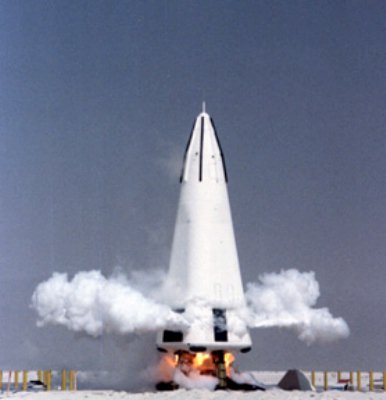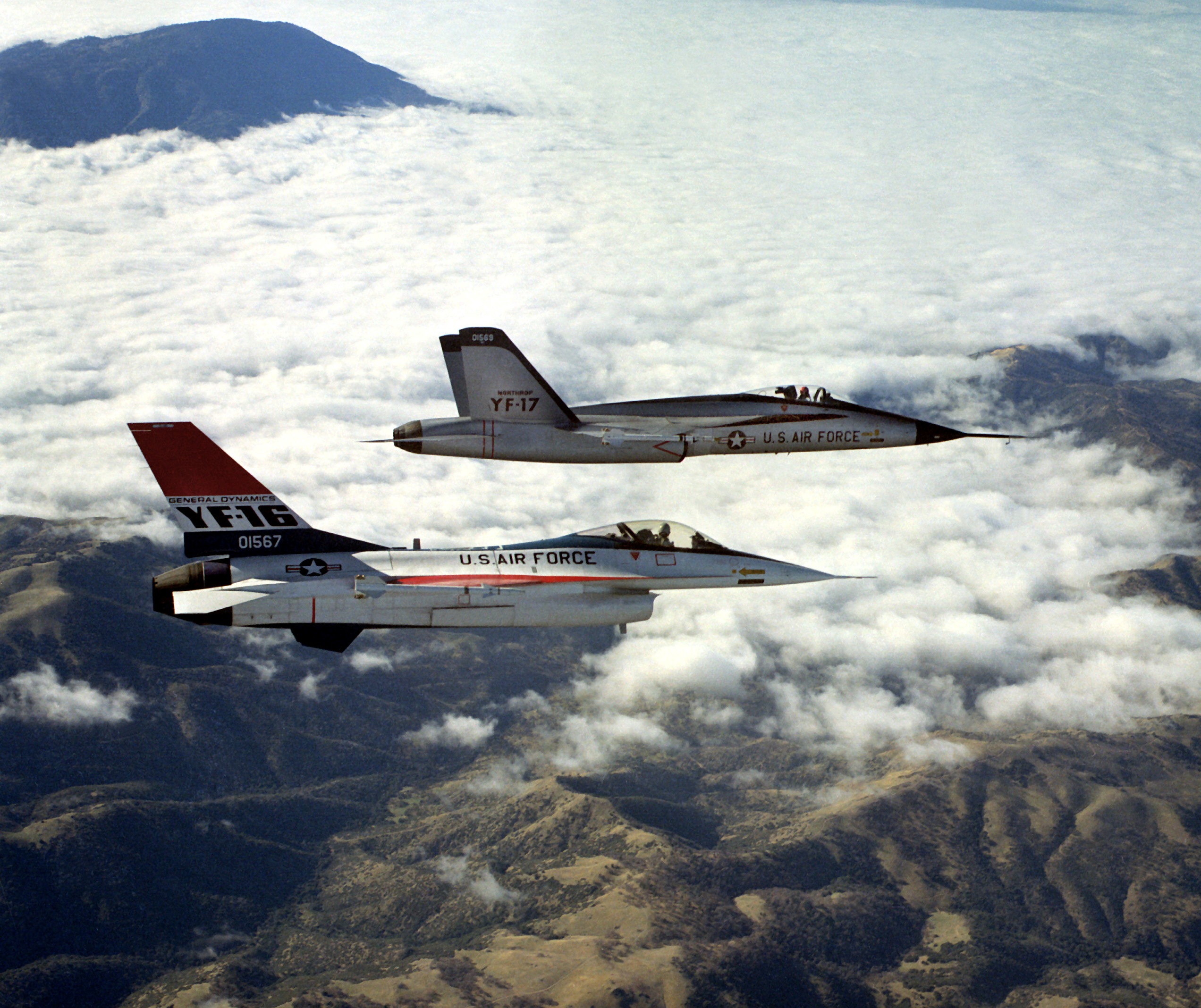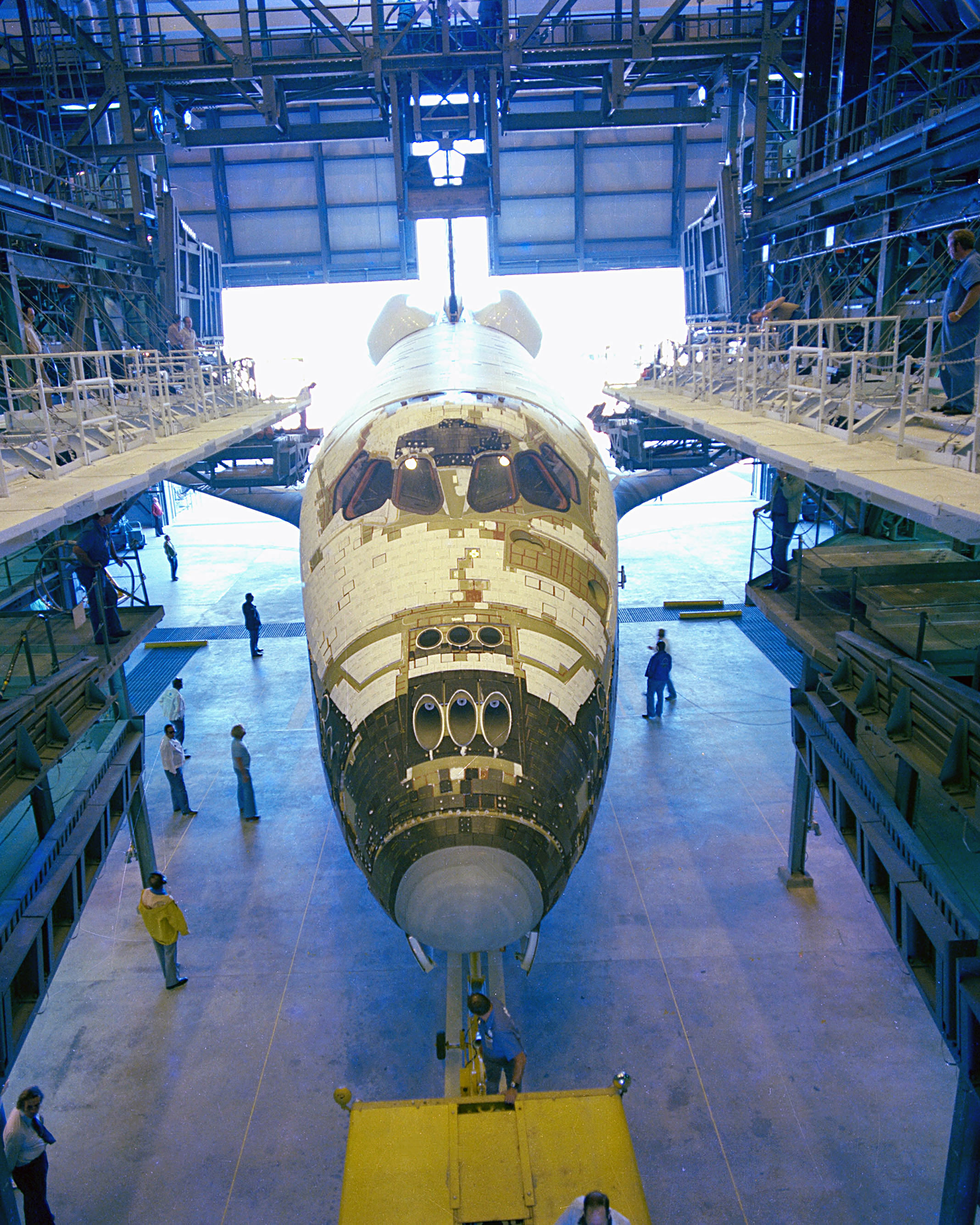|
McDonnell Douglas DC-X
The DC-X, short for Delta Clipper or Delta Clipper Experimental, was an uncrewed prototype of a reusable single-stage-to-orbit launch vehicle built by McDonnell Douglas in conjunction with the United States Department of Defense's Strategic Defense Initiative Organization (SDIO) from 1991 to 1993. Starting 1994 until 1995, testing continued through funding of the US civil space agency NASA. In 1996, the DC-X technology was completely transferred to NASA, which upgraded the design for improved performance to create the DC-XA. After a test flight of DC-XA in 1996 resulted in a fire, the project was canceled. Despite its cancellation, the program inspired later reusable launch systems. Michael D. Griffin has since praised the program as "government R&D at its finest." Background According to writer Jerry Pournelle: "DC-X was conceived in my living room and sold to National Space Council Chairman Dan Quayle by General Graham, Max Hunter and me." According to Max Hunter, howev ... [...More Info...] [...Related Items...] OR: [Wikipedia] [Google] [Baidu] |
SSTO
A single-stage-to-orbit (SSTO) vehicle reaches orbit from the surface of a body using only propellants and fluids and without expending tanks, engines, or other major hardware. The term usually, but not exclusively refers to reusable vehicles. To date, no Earth-launched SSTO launch vehicles have ever been flown; orbital launches from Earth have been performed by multi-stage rockets, either fully or partially expendable. The main projected advantage of the SSTO concept is elimination of the hardware replacement inherent in expendable launch systems. However, the non-recurring costs associated with design, development, research and engineering (DDR&E) of reusable SSTO systems are much higher than expendable systems due to the substantial technical challenges of SSTO, assuming that those technical issues can in fact be solved. SSTO vehicles may also require a significantly higher degree of regular maintenance. It is considered to be marginally possible to launch a single-stage- ... [...More Info...] [...Related Items...] OR: [Wikipedia] [Google] [Baidu] |
Jerry Pournelle
Jerry Eugene Pournelle (; August 7, 1933 – September 8, 2017) was an American scientist in the area of operations research and ergonomics, human factors research, a science fiction writer, essayist, journalist, and one of the first bloggers. In the 1960s and early 1970s, he worked in the aerospace industry, but eventually focused on his writing career. In an obituary in ''Gizmodo'', he was described as "a tireless ambassador for the future." Pournelle's hard science fiction writing received multiple awards. In addition to his solo writing, he wrote several novels with collaborators including Larry Niven. Pournelle served a term as President of the Science Fiction and Fantasy Writers of America. Pournelle's journalism focused primarily on the computer industry, astronomy, and space exploration. From the 1970s until the early 1990s, he contributed to the computer magazine ''Byte (magazine), Byte'', writing from the viewpoint of an intelligent user, with the oft-cited credo, "We ... [...More Info...] [...Related Items...] OR: [Wikipedia] [Google] [Baidu] |
RL10
The RL10 is a liquid-fuel cryogenic rocket engine built in the United States by Aerojet Rocketdyne that burns cryogenic liquid hydrogen and liquid oxygen propellants. Modern versions produce up to of thrust per engine in vacuum. RL10 versions were produced for the Centaur upper stage of the Atlas V and the DCSS of the Delta IV. More versions are in development or in use for the Exploration Upper Stage of the Space Launch System and the Centaur V of the Vulcan rocket. The expander cycle that the engine uses drives the turbopump with waste heat absorbed by the engine combustion chamber, throat, and nozzle. This, combined with the hydrogen fuel, leads to very high specific impulses (''I''sp) in the range of in a vacuum. Mass ranges from depending on the version of the engine. History The RL10 was the first liquid hydrogen rocket engine to be built in the United States, with development of the engine by Marshall Space Flight Center and Pratt & Whitney beginning in the 195 ... [...More Info...] [...Related Items...] OR: [Wikipedia] [Google] [Baidu] |
Douglas SASSTO
Douglas Aircraft's SASSTO, short for "Saturn Application Single Stage to Orbit", was a single-stage-to-orbit (SSTO) reusable launch system designed by Philip Bono's team in 1967. SASSTO was a study in minimalist designs, a launcher with the specific intent of repeatedly placing a Gemini capsule in orbit for the lowest possible cost. The SASSTO booster was based on the layout of the S-IVB upper stage from the Saturn family, modified with a plug nozzle. Although the SASSTO design was never followed up at Douglas, it is widely referred to in newer studies for SSTO launchers, notably the MBB "Beta" (Ballistisches Einstufiges Träger-Aggregat) design, which was largely an updated version of SASSTO. History In 1962 NASA sent out a series of studies on post-Apollo launch needs, which generally assumed very large launchers for a crewed mission to Mars. At Douglas, makers of the S-IVB, Philip Bono led a team that studied a number of very large liquid-fueled boosters as a way to lower the c ... [...More Info...] [...Related Items...] OR: [Wikipedia] [Google] [Baidu] |
Philip Bono
Philip Bono (13 January 1921 – 23 May 1993) was a Douglas Aircraft Company engineer. He was a pioneer of reusable launch system, reusable vertical landing single-stage to orbit launch vehicles. As a visionary designer, he is credited with inventing the first version of a recoverable single-stage spacecraft booster, and his contributions influenced spacecraft design. Bono pursued single-stage space launch as simpler and cheaper. He realized to do this he would need to use high specific impulse liquid hydrogen/liquid oxygen rocket engines. Afterwards he proposed to make these vehicles reusable. From his ROOST design onwards Bono advocated space launch vehicles without wings, usually using rocket-assisted vertical takeoff and landing (VTVL). According to his estimates, wings consisted mostly of dead weight that decreased launch payload mass. He patented a reusable plug nozzle rocket engine which had dual use as a heat shield for atmospheric reentry. His early 1960s concepts infl ... [...More Info...] [...Related Items...] OR: [Wikipedia] [Google] [Baidu] |
Douglas DC-1
The Douglas DC-1 was the first model of the famous American DC (Douglas Commercial) commercial transport aircraft series. Although only one example of the DC-1 was produced, the design was the basis for the DC-2 and DC-3, the latter being one of the most successful aircraft in the history of aviation. Design and development Development of the DC-1 can be traced back to the 1931 crash of a TWA airliner, a Fokker F-10 trimotor in which a wing failed, likely because water had seeped between the layers of the wood laminate and dissolved the glue holding the layers together. Following the accident, the Aeronautics Branch of the U.S. Department of Commerce placed stringent restrictions on the use of wooden wings on passenger airliners.Friedman and Friedman, ''Aeroplane Monthly'' May 2001, pp. 34–40.O'Leary, ''Aeroplane Monthly'' February 2007, p. 71. Boeing developed an answer, the 247, a twin-engined all-metal monoplane with a retractable undercarriage, but their production c ... [...More Info...] [...Related Items...] OR: [Wikipedia] [Google] [Baidu] |
General Dynamics F-16 Fighting Falcon
The General Dynamics F-16 Fighting Falcon is an American single-engine supersonic Multirole combat aircraft, multirole fighter aircraft originally developed by General Dynamics for the United States Air Force (USAF). Designed as an air superiority day fighter, it evolved into a successful night fighter, all-weather multirole aircraft with over 4,600 built since 1976. Although no longer purchased by the U.S. Air Force, improved versions are being built for export. In 1993, General Dynamics sold its aircraft manufacturing business to the Lockheed Corporation, which became part of Lockheed Martin after a 1995 merger with Martin Marietta. The F-16's key features include a frameless bubble canopy for enhanced cockpit visibility, a side-stick, side-mounted control stick to ease control while maneuvering, an ejection seat reclined 30 degrees from vertical to reduce the effect of g-forces on the pilot, and the first use of a relaxed stability, relaxed static stability/fly-by-wire fligh ... [...More Info...] [...Related Items...] OR: [Wikipedia] [Google] [Baidu] |
Sub-orbital
A sub-orbital spaceflight is a spaceflight in which the spacecraft reaches outer space, but its trajectory intersects the surface of the gravitating body from which it was launched. Hence, it will not complete one orbital revolution, will not become an artificial satellite nor will it reach escape velocity. For example, the path of an object launched from Earth that reaches the Kármán line (about – above sea level), and then falls back to Earth, is considered a sub-orbital spaceflight. Some sub-orbital flights have been undertaken to test spacecraft and launch vehicles later intended for orbital spaceflight. Other vehicles are specifically designed only for sub-orbital flight; examples include crewed vehicles, such as the X-15 and SpaceShipTwo, and uncrewed ones, such as ICBMs and sounding rockets. Flights which attain sufficient velocity to go into low Earth orbit, and then de-orbit before completing their first full orbit, are not considered sub-orbital. Examples o ... [...More Info...] [...Related Items...] OR: [Wikipedia] [Google] [Baidu] |
Launch Cost
Space launch market competition is the manifestation of market forces in the launch service provider business. In particular it is the trend of competitive dynamics among payload transport capabilities at diverse prices having a greater influence on launch purchasing than the traditional political considerations of country of manufacture or the national entity using, regulating or licensing the launch service. Following the advent of spaceflight technology in the late 1950s, space launch services came into being, exclusively by national programs. Later in the 20th century commercial operators became important customers of launch providers. International competition for the communications satellite payload subset of the launch market was increasingly influenced by commercial considerations. However, even during this period, for both commercial- and government-entity-launched commsats, the launch service providers for these payloads used launch vehicles built to governmen ... [...More Info...] [...Related Items...] OR: [Wikipedia] [Google] [Baidu] |
Space Shuttle
The Space Shuttle is a retired, partially reusable launch system, reusable low Earth orbital spacecraft system operated from 1981 to 2011 by the U.S. National Aeronautics and Space Administration (NASA) as part of the Space Shuttle program. Its official program name was the Space Transportation System (STS), taken from the 1969 plan led by U.S. vice president Spiro Agnew for a system of reusable spacecraft where it was the only item funded for development. The first (STS-1) of four orbital test flights occurred in 1981, leading to operational flights (STS-5) beginning in 1982. Five complete Space Shuttle orbiter vehicles were built and flown on a total of 135 missions from 1981 to 2011. They launched from the Kennedy Space Center (KSC) in Florida. Operational missions launched numerous satellites, interplanetary probes, and the Hubble Space Telescope (HST), conducted science experiments in orbit, participated in the Shuttle–Mir program, Shuttle-''Mir'' program with Russia, ... [...More Info...] [...Related Items...] OR: [Wikipedia] [Google] [Baidu] |
Maxwell Hunter
Maxwell White Hunter II (March 11, 1922 – November 10, 2001) was a prominent American aerospace engineer. He worked on the design of the Douglas B-42 and Douglas B-43 bombers, the Honest John, Nike-Ajax, and Nike-Zeus missiles, the Thor IRBM, and on parts of the Strategic Defense Initiative. In later years he worked on space-launch vehicles and was a proponent of Single-stage-to-orbit (SSTO) designs. He was honored in 1995 by the National Space Society for lifelong contributions to the technology of spaceflight. Early life and education Maxwell Hunter was born in Hollidaysburg, Pennsylvania and graduated from Washington and Jefferson College in that state with a degree in physics and mathematics. In 1944, he earned a master's degree in aeronautical engineering from the Massachusetts Institute of Technology (MIT). Accomplishments in aerospace After earning his MS from MIT, Hunter went to work for the Douglas Aircraft Company. He became their chief designer in aeronauti ... [...More Info...] [...Related Items...] OR: [Wikipedia] [Google] [Baidu] |





